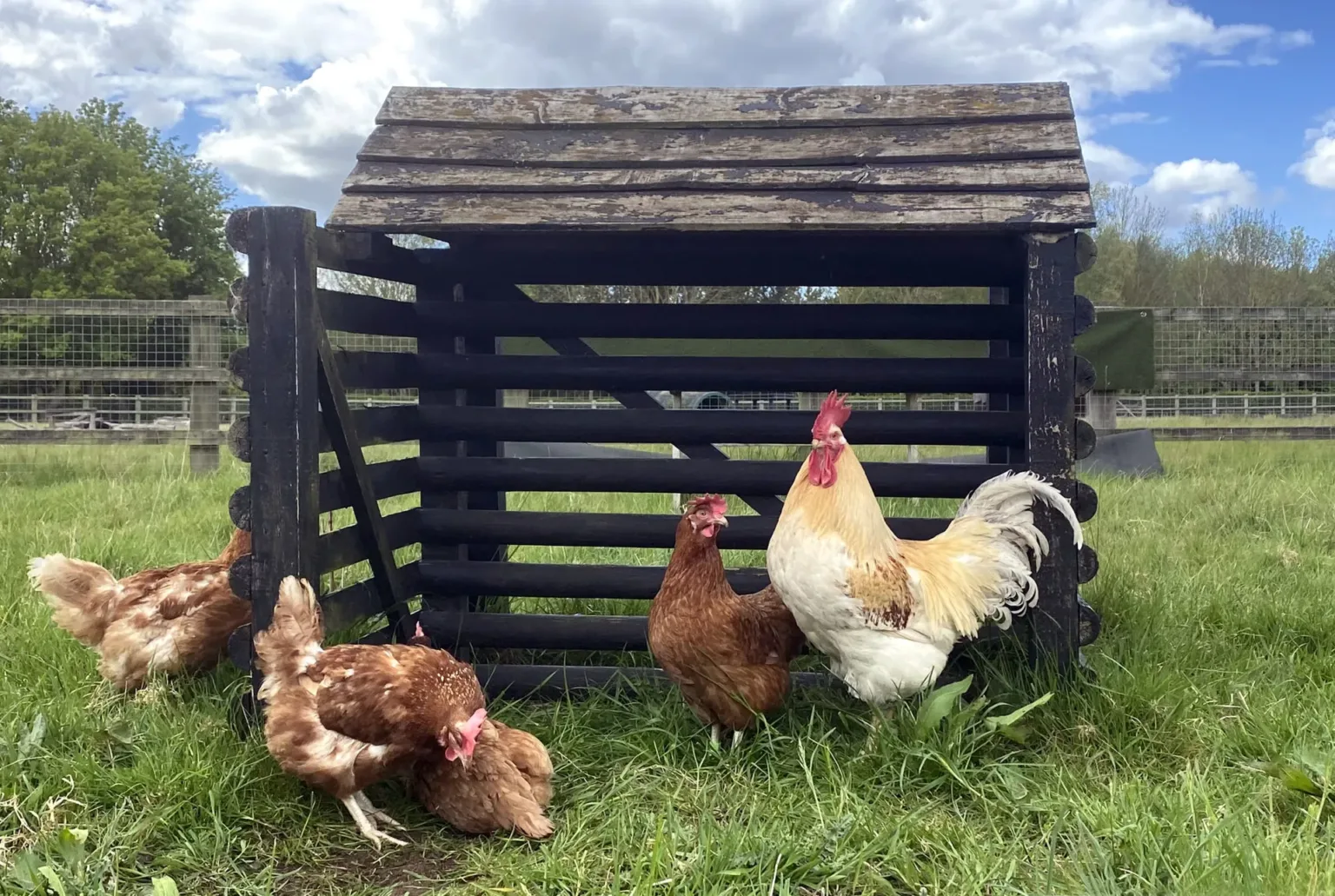Chickens naturally live outdoors and spend most of the day in a run or out on the grass looking for tasty bugs to eat. So, spare a thought for our feathered friends when the weather turns and read our top tips on how to prepare for the cold weather.
Top tips
- Ventilation is very important within coops so make sure any ventilation holes aren’t blocked with bedding.
- Shelter part of their run and roof with Perspex or clear plastic sheeting while ensuring there’s still good ventilation.
- Keep water containers in their run to avoid spills in the coop that could freeze over. On cold days, try filling up their drinker with warm water – it will be like having a comforting brew!
- For a cosy, filling treat, mash up some of your hens’ pellets with warm water.
- As cute as they may seem, don’t be tempted to put your hens in a chicken jumper. They will struggle to regulate their temperature and the material can easily get hooked on their feet.
- Chickens don’t like quick changes in temperature, as it confuses their internal thermometer. Don’t bring them indoors into a heated room at night and put them out again during the day. Only bring them inside if they look poorly and need to see a vet.
Cosy coops
There are lots of ways you can cosy-up your chicken’s coop in the winter. Here are a few ideas:
- Inspect the coop before spells of cold weather and make sure it’s wind and damp-proof.
- Create cosy spaces for your hens to snuggle up together and sleep – try filling some large cardboard boxes with straw.
- Featherless ex-caged hens may benefit from a well-fitted heat lamp during cold weather which offers them the choice to keep warm if needed.
- Top up their bedding daily with a thick layer of wood shavings on the floor and ample amounts of straw in nesting areas to keep the warmth in.
Beware of bumblefoot
Bumblefoot is a bacterial infection that occurs on the feet of birds, rodents and rabbits. It’s caused by an infected wound or by being kept on damp bedding or the ground. Prolonged exposure to this can damage the feet and allows nasty bacteria to find it’s way onto the foot. It’s worth moving them onto a concrete surface or regularly layering the floor with clean, dry straw to help prevent health issues including bumblefoot.
